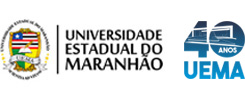Use este identificador para citar ou linkar para este item:
https://repositorio.uema.br/jspui/handle/123456789/4899| Título: | A utilização de recursos da tecnologia assistiva para modificabilidade cognitiva estrutural de estudantes com Síndrome de Down no atendimento educacional especializado |
| Título(s) alternativo(s): | The use of assistive technology resources for structural cognitive modifiability of students with Down Syndrome in specialized educational services |
| Autor(es): | Santos, Thaiss Brito |
| Orientador: | Branco, Priscila de Sousa Barbosa Castelo |
| Membro da Banca: | Rodrigues, Sannya Fernanda Nunes |
| Membro da Banca: | Rios, Maria de Fátima Serra |
| Data do documento: | 2019 |
| Editor: | Universidade Estadual do Maranhão |
| Resumo: | A presente produção monográfica se baseia na utilização de recursos da tecnologia assistiva para modificabilidade cognitiva estrutural de estudantes com Síndrome de Down no atendimento educacional especializado e tem a pretensão de analisar como a Experiência de Aprendizagem Mediada (EAM) e a forma como pode promover aprendizagem de pessoas com Síndrome de Down, utilizando os recursos da tecnologia assistiva (TA). Na educação especial, a tecnologia vem ganhando espaço por proporcionar um leque de possibilidades e diversidade no âmbito educacional especializado. A tecnologia assistiva, como é conhecida esse arsenal, faz uso de ferramentas específicas na área da inclusão para apoio em situações cotidianas da vida. Consequentemente, para que se possa ter maior compreensão da teoria da Modificabilidade Cognitiva Estrutural a partir da Feuerstein (1997), (2014), Salami e Sarmento (2011), Gonçalves e Vagula (2012) e Morashá (2014), aponta-se que o psicológico do ser humano é capaz de se expandir por meio da mediação e potencializar o desenvolvimento cognitivo. Tal estudo, também baseia-se em Santarosa e Conforto (2012), Silva e Ferreira (2016), Sartoretto e Bersch (2017), Voivodic (2013), Cardoso (2014) e Montoan (2003). O método utilizado para o desenvolvimento desta pesquisa será a abordagem qualitativa e os sujeitos envolvidos serão professores do ensino regular e AEE e estudante com síndrome de Down. A intervenção propõe o uso da tecnologia assistiva e os seus recursos, bem como: tablet, computador, sites e aplicativos educacionais. A coleta de dados foi realizada através de entrevistas com a família do estudante, a professora da sala de recurso multifuncional e o ensino regular tendo como objetivo principal levantar dados que fomentem os resultados do estudo. Concluir que o uso dos recursos e meios digitais contribuiu com o desenvolvimento cognitivo do estudante. Considerando que o período de intervenção com o estudante ocorreu alguns entraves no percurso da pesquisa. Obtemos como resultado, a confirmação da hipótese, que a intervenção orientada pelo método EAM e com uso dos recursos da TA, é possível propor uma aprendizagem significativa e prazerosa para pessoas com Síndrome de Down |
| Resumo: | The present monographic production is based on the use of Assistive Technology resources for structural cognitive modifiability of students with Down Syndrome in specialized educational care and has the pretension of analyzing how the Mediated Learning Experience (AME) and how it can promote learning of people with Down Syndrome, using Assistive Technology (TA) resources. In special education, technology has been gaining ground by providing a range of possibilities and diversity in the specialized educational setting. Assistive technology, as this arsenal is known, makes use of specific tools in the area of inclusion for support in everyday situations of life. Consequently, in order to have a better understanding of the theory of Structural Cognitive Modification from Feuerstein (1997), (2014), Salami and Sarmento (2011), Gonçalves and Vagula (2012) and Morashá (2014), it is pointed out that the psychological of the human being is able to expand through mediation and potentiate cognitive development. This study is also based on Santorosa and Comfort (2012), Silva and Ferreira (2016), Sartoretto and Bersch (2017), Voivodic (2013), Cardoso (2014) and Montoan (2003). The method used for the development of this research will be the qualitative approach and the subjects involved will be teachers of regular education and ESA and student with Down syndrome. The intervention proposes the use of assistive technology and its resources, as well as: tablet, computer, websites and educational applications. Data collection was carried out through interviews with the student's family, the teacher of the multifunctional resource room and regular education, whose main objective was to collect data to promote the results of the study. Conclude that the use of digital resources and resources contributed to the student's cognitive development. Considering that the period of intervention with the student occurred some obstacles in the course of the research. We obtained as a result, confirmation of the hypothesis, that the intervention guided by the EAM method and using the resources of the TA, it is possible to propose a meaningful and pleasant learning for people with Down Syndrome |
| Palavras-chave: | Tecnologia assistiva Síndrome de Down Modificabilidade cognitiva estrutural Experiência de aprendizagem mediada Atendimento educacional especializado Assistive technology Down syndrome Structural cognitive modifiability Mediated learning experience Specialized educational support |
| Aparece nas coleções: | Curso de Licenciatura em Pedagogia - CECEN - UEMA - Monografias |
Arquivos associados a este item:
| Arquivo | Descrição | Tamanho | Formato | |
|---|---|---|---|---|
| TCC - THAISS BRITO SANTOS - LICENCIATURA EM PEDAGOGIA - CECEN UEMA 2019.pdf | PDF A | 897.52 kB | Adobe PDF | Visualizar/Abrir |
Os itens no repositório estão protegidos por copyright, com todos os direitos reservados, salvo quando é indicado o contrário.
